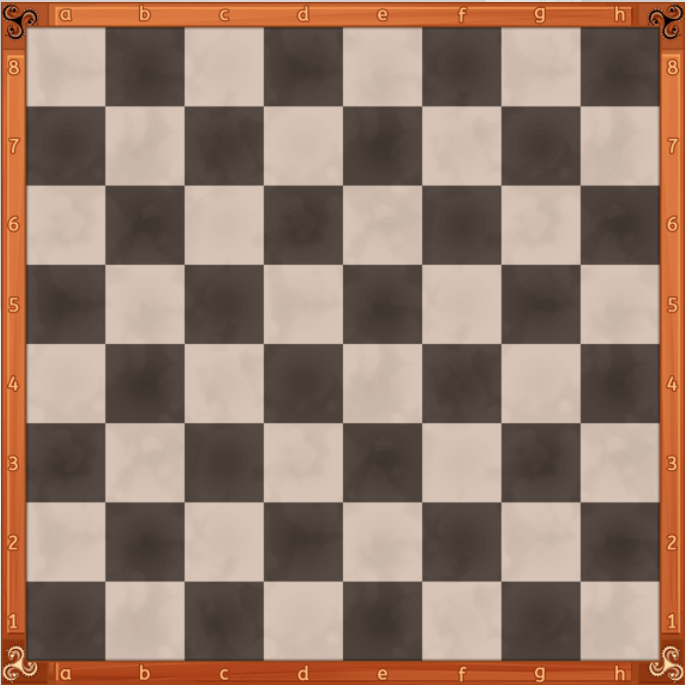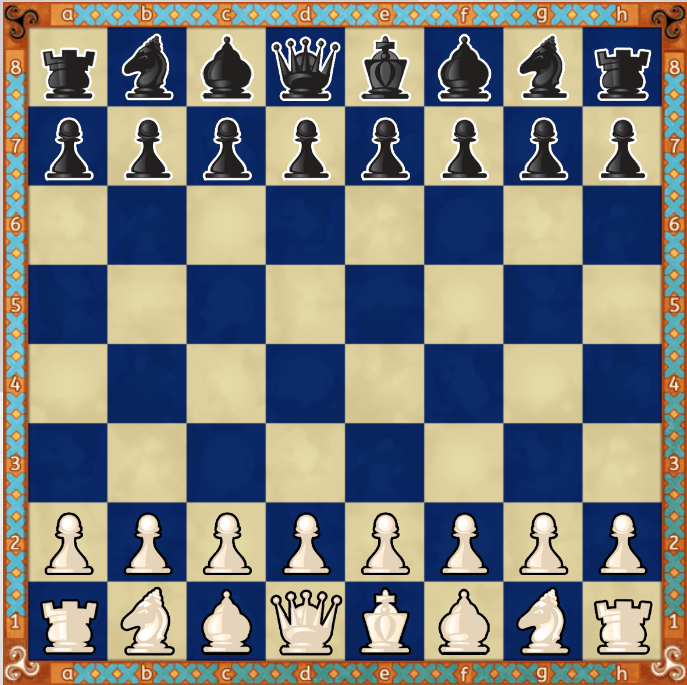Welcome, game enthusiasts and lovers of mental challenges. In the vast universe of chess, the chessboard is your gateway to a world full of strategy, anticipation and critical decisions. In this post, we will explore in depth the chessboard, the structure, the importance and how it can be used as a stage for fascinating mental battles to take place. Get ready to enter the universe of chess and discover the role the chessboard plays!
Index
Basic Structure of the Chessboard
The chessboard is a square-shaped battlefield composed of 64 smaller squares. These squares alternate between light and dark colours, usually black and white.

The board is divided into 8 horizontal rows and 8 vertical columns. To make it easier, the horizontal rows are numbered from 1 to 8 and the vertical columns are lettered from a to h. The rows and columns meet to form small squares. These squares use the letter of the column and the number of the row as the coordinates. These coordinates are used to describe and record the moves. This allows for clear and precise communication about the moves in chess.
In addition to columns and rows, diagonals are very important in chess, as some pieces even move diagonally!
Importance of Light and Dark Squares
The chessboard represents a miniature world where the pieces face off against each other. Each square has its own direction, allowing the pieces to move around the board and take up strategic positions. The light and dark squares play a crucial role in the game. Not only do they give the board its distinctive appearance, but they also affect the strategy and decisions you make. Some moves are based on occupying squares of a particular colour, taking advantage of their inherent strengths and weaknesses. Learning how to use the squares efficiently is essential for a good game.
As we have seen, squares are generally black and white, but this is not the only option! The important thing is that they are contrasting colours. Take a look at this chessboard:

Board Design and Material
Chess has a long history and has been played for a long time. This is reflected in the materials that can be used to make a chessboard. It can be made of various materials, such as wood, plastic or even more luxurious materials such as marble. Each material has its own characteristics and advantages. It is important to choose a chessboard that is durable, of good quality and suits your personal preferences. Remember that a good chessboard will allow you to be comfortable and enjoy your games.
Additionally, we now have technological resources and there are virtual boards and platforms where we can play with people from all over the world. Isn’t that wonderful?
The Chessboard as an Educational Tool
In addition to being the arena where chess battles take place, the chessboard is also a valuable educational tool. It allows the visualisation of patterns, moves and strategies. You can study historical games or challenge your creativity by analysing complex positions. The board is your ally in improving your chess skills and exploring the beauty of the game.
If you want to take a more in-depth look at the advantages of teaching chess, you can read the post Chess for kids: 3 main reasons to teach it.
Conclusion
The chessboard is much more than just a playing field; it is the heart of chess, the stage where brilliant minds deploy their tactics and strategies. Through its structure, colours and squares, the chessboard becomes a powerful tool that stimulates analytical thinking and fosters creativity. As you immerse yourself in the fascinating world of chess, always remember to appreciate and value the board that accompanies you in every game – may each move on the board be a step towards greater mastery and fulfillment in this beautiful game!
If you want to continue learning and practising math, don’t hesitate to sign up for Smartick. You will have a free trial period for any of our programmes.
May your games be full of masterful moves and exciting moments on the chessboard!
Learn More:
- Learn How to Find Exact Square Roots and Visual Examples
- Chess for Kids: 3 Main Reasons to Teach It
- Reasoning Games to Improve Mathematics
- Exercising Memory with SmartickBrain Games
- Manipulative Games to Practice Set Theory








Love it! Great explanation, it made me want to play chess 🙂
Thank you very much for your comment Ashley, we are very happy to read it. We will continue to publish new and interesting posts, best regards!